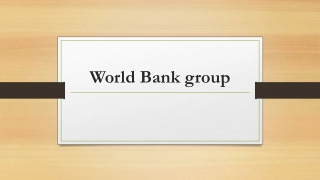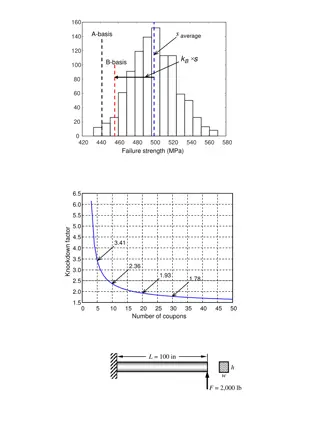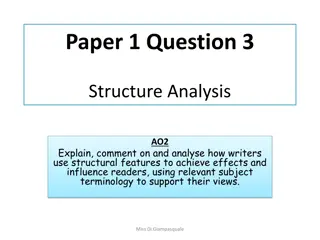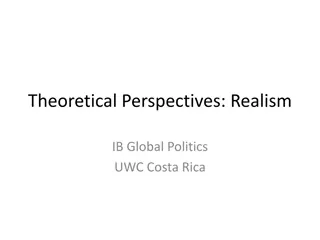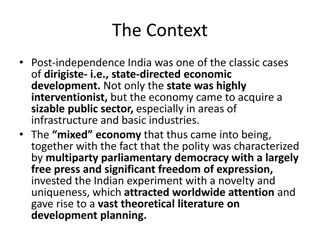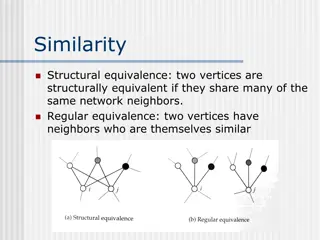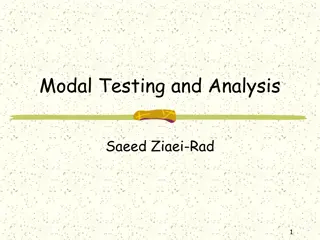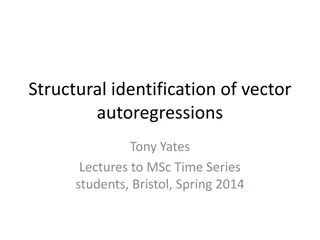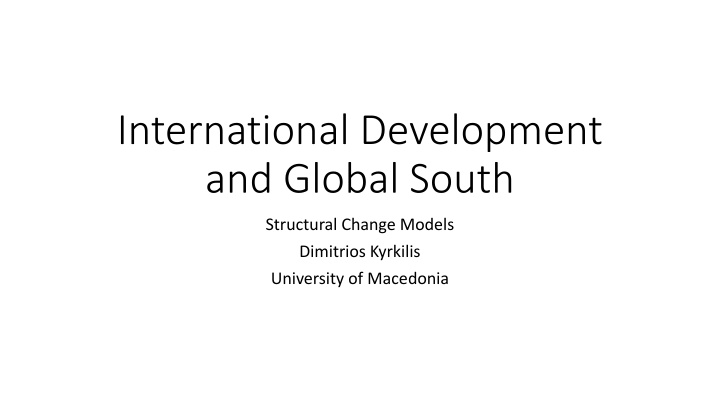
Structural Change Theories in International Development and Global South Economies
Explore the structural change mechanisms essential for transitioning underdeveloped economies from primary to secondary and services sectors. Delve into models like the Dual Economy theory by Arthur Lewis and the impact of agricultural and manufacturing sectors on economic development.
Download Presentation

Please find below an Image/Link to download the presentation.
The content on the website is provided AS IS for your information and personal use only. It may not be sold, licensed, or shared on other websites without obtaining consent from the author. If you encounter any issues during the download, it is possible that the publisher has removed the file from their server.
You are allowed to download the files provided on this website for personal or commercial use, subject to the condition that they are used lawfully. All files are the property of their respective owners.
The content on the website is provided AS IS for your information and personal use only. It may not be sold, licensed, or shared on other websites without obtaining consent from the author.
E N D
Presentation Transcript
International Development and Global South Structural Change Models Dimitrios Kyrkilis University of Macedonia
The structural change theory focuses on the structural change mechanisms underdeveloped economies use for transforming their econocic structure from a dominanant primary sector, mainly agriculture to the secondary sector, mainly manufacturing and to the services sector. Structural change theories use the hypotheses and the tools of neockassical economics, i.e. perfect competition, and the principles of marginal theory for proving the transformation mechanism. Structural Change Models: Empirical Analysis of Development Models by Hollis B.Chenery Theory of the Dual Economy (two sector model of surplus labour) by Arthur Lewis 1918-1994 Nobel Prize winner 1915-1991
The Dual Model of Structural Transfornation The Dual Model of Structural Transfornation Lewis, W. A. (1954). Economic development with unlimited supplies of labour Lewis, W. A. (1954). Economic development with unlimited supplies of labour, , The The M Manchester anchester S School chool, , 22 The insights of the model was used as a development mechanism in the 60 and The insights of the model was used as a development mechanism in the 60 and early 70 s in a number of developing countries at the time, and more recently for early 70 s in a number of developing countries at the time, and more recently for the industrialisation of China. the industrialisation of China. 22(2), 139 (2), 139- -191. 191. Less developed countries have a dual economic structure: a traditional agricultural sector, and a modern manufacturing (industrial) sector. The labour market has a perfectly competitive structure, i.e law of efficient pricing, hence the wage rate is equal to the marginal productivity of labour.
Agricultural Sector Agricultural Sector The primary sector is the dominant sector of the economy in terms of employment, i.e. the sector concentrates the sheer majority of employment, while most of the population lives in rural areas and its income depend on agriculture. The sector because of the high concentration of labour and low mechanisation, i.e. low capital intensity is charactetised by extremely low marginal productivity of labour zero or near zero in the best case, therefore wages are very low, and per capita incone is also low. In fact, labour in the sector is underemployed. By reducing emloyment the marginal productivity of labour would increase. So, the total agriculture output is expected to sustain. Lewis argues that because of that labour is in surplus in the agricultural sector, and this surplus labour should be tranferred to the manufacturing sector.
The Manufacturing Sector The Manufacturing Sector Manufacturing is the technologicaly advanced sector of the economy, and for that reason is capital intensive and it has a high investment rate. Consequently, marginal productivity of labour is hig. The location of manufacturing units is in or near urban areas. Capitalists reinvest profits generated in manufacturing in the same sector.
Industrialisation Industrialisation Because of higher marginal labour productivity in manufacturing than agriculture, the former remunarates labour with higher wages than the latter, thus labour is motivated to move from agriculture to manufacturing. The result is threefold: 1. Agriculture disposes of the surplus labour without reducing agriculture output. So there is enough food supply at low prices to sustain the increased urban populations. 2. Labour supply in manufacturing increases, facilitating that way the expansion of output without generating excess labour denand that could raise wages. By keeping wages below marginal labour productivity, profit rates are sustained although, capital intensity increases thus forcing profit rates downwards.
Industrialisation: cause of economic growth Industrialisation: cause of economic growth Employment in manufacturing increases gradually, so it does income raising savings, which in turn raises investment leading to the gradual increase of manufacturing output. Therefore, employment and incomes in manufacturing are both rising, increasing demand not only for manufactures but for agricultural products too. Finally, total output increases triggering economy to grow. As markets expand and economies of scale are exploited average production costs move downwards, thus markets expand further, and so on. The cause of economic growth is industrialisation initiated by transferring resources from agriculture to manufacturing. The transfer of resources take place through first, shifting labour from agriculture to manufacturing, and second, by maintaing terms of trade, i.e. relative prices in favour of manufacturing. Such policy assists the food sustainability of urban populations without demanding wages to rise. Relative higher prices of manufactures transfer funds from other sectors to industry, and maintain real wages low. Denand for labour systains in industry and profits are secured.. 3.
Break Point to the Process of Industrialisation Break Point to the Process of Industrialisation Industrialisation reaches a break point when the surplus labour of agriculture has been totally absorbed by manufacturing. The marginal labour productivity in agriculture has become positive enough so any further decrease of labour leads to decreasing agricultural output and to increasing wages in this sector. Also, in the manufacturing sector given that there is no more labour transfer from agriculture the labour supply curve starts raising wages.
Criticism to the Dual Model Reality in developing countries shows that profits made in manufacturing are partially reinvested in the same sector and they are partially used also to increase consumption, to finance investments in other sectors, e.g. real estate, commerce, etc. and they are exported and invested in the international financial sector. Not all surplus labour of agriculture becomes employed in manufacturing. A part, in some cases a considerable part is employed in the underground economy living at the outskirts of urban centres in slams. *
The transfer of labour from agriculture to manufacturing takes place at a rate dictated by the rate of employment creation in manufacturing. The latter depends on the rate of capital accumulation. Under the assumption of constant returns to scale, if capital increases by two labour should also increase by two in order output to increase by two. However, if technology saves labour the latter is substituted by capital and the increasing capital intensity leads to the shift of the labour demand curve to a less sensitive (rate of change) position. The introduction of labour saving capital shifts the MPrL curve to the right,i.e. for the same level of employment MPrL is higher so labour employment should rise by a lesser percentage than before for achieving the sane rate of output increase. Demand curve shifts from D1(KM1) to D2(K 2 ) Manufacturing output rises from 0D1 L1 to 0D2 L1 , but both the wage share (0WM L1 ) and employment level (OL1) renains constant. The additional output (D1D2E) is allocated fully to profits. The share of profits rise from WM D1 to WM D2 . Additional profits (D1D2E) = additional output Economic growth does not lead to welfare increase for all but only for capital owners. Income inequality increases.
Manufacturing expands when the transfer of the surplus labour leads to constant wages. In reality wages increase due to bottlenecks of the labour market in developing countries. These bottlenecks are due to labour market segmentation. Labour is not a homogeneous factor of production, with the exception of unskilled labour. manufacturing demands mainly skilled labour, which is scarce in developing countries. Therefore, the labour market is segmented according to the various skills required. In each labour market segment the labour supply curve has a positive slope, which is as steeper as the scarcity of the relevant skill increases. demand results to rising wages. Wages rise at an increasing foreign multnationals is observed to pay higher wages than domestic firms in order to secure labour with the required skills, which are more advanced with relatively higher scarcity in the case of foreign subsidiaries than in case of domestic firms due to the fact that foreign firms use more advanced technology transferred from their parent Multinationals than domestic firms have the capacity to employ. But Therefore, increasing labour rate especially because
Development Models Development Models Development models analyse the structural transformations economies and societies unertake as they evolve from the agrarian phase of development to the industrial and post indudtrial phases. They consider industrialisation as the locomotive of development They treat capital and savings accumulation as the necessary but not sufficient condition for economic growth. The transformation process requires a number of complementary restructurings, such as resource allocation and production patterns, consumer preferences and denand patterns, foreign trade patterns, demographic conditions e.g. urbanisation level, education, etc.
Hollis Chenery Hollis Chenery Harvard economist H. Chenery et al. tested empirically the validity of development models for a number of developing countries with different per capita incomes in the postwar period. The empirical testing led to identifying some common characteristics of develpment: 1. Industry becomes the dominant sector of the economy. 2. Capital both physical and human accumulates. 3. Demand patterns shift from concentrsting to basic goods, e.g. food, simple clothing, shelter, etc. to differentiated manufacturing products including luxury goods, and to services, e.g. Education, entertainment, holidsys, travelling, etc. 4. People migrate from rural to urban areas. 5. Both the size of family and the growth rate of population decline.
Big Push: Rosenstein Big Push: Rosenstein - - Rodan Rodan Paul Narcyz Rosenstein-Rodan (1902 1985) was an Austrian economist born in Krak w. He taught in UCL and LSE (1930 to 1947) then moved to the World Bank, before becoming a MIT professor from 1953 to 1968. Rosenstein-Rodan as early as 1943 in a paper titled Problems of Industrialisation of Eastern and South-Eastern Europe, Economic Journal vol. 53, No. 210/211, pp. 202 11, argued in favour of planned large-scale investment programmes ( the big push as it was lately named) aiming at industrialising countries with a large labour surplus in agriculture, taking advantage of network effects, i.e. economies of scale and scope, in order to escape from the low level equilibrium 'trap , what was called later poverty trap .
Rosenstain Rosenstain- -Rodan Rodan Given increasing returns to scale, government-induced industrialisation is possible to break the poverty trap in underdeveloped countries. Lack of domestic markets is a significant disincentive for a sector to mechanise by itself. Consequently there is a low likelihood that industrialisation could be initiated within and by a single leading sector. But coordinated investments in various sectors undertaken simultaneously, would develop markets as outlets for each other sector s output. These demand spillovers would produce increasing returns and lead the ecomomy towards a ptocess of self- sustained growth.
Coordination between industrial sectors Coordination between industrial sectors Succesful coordination between industrial sectors is the product of production complementarities between them, and they are set in motion when investment activity in one sector induces and/or is induced by investment activity in one or more other sectors. If this prevails throughout the economy, it embarks on a path of sustainable growth. If, on the contrary, such coordination fails the economy embarks on a path of sustainable stagnation.
Intersectoral Linkages Intersectoral Linkages That investnents in one sector might induce or are induced by investments in other industrial sectors is based on the existence of linkages between industrial sectors. These intersectoral linkages create externalities which if they are internalised to the market system facilitate growth. Intersectoral linkages are of two kinds: Forward linkages, when the output of a sector serve as an input of the production process of another. The output expansion of the former increases the input supply of the latter facilitating the production process and the output expansion. Backward linkages, when the production process of one sector uses as an input the output of another sector. A demand increase of the former as a result of its output expansion raises the production output of the latter.
Externalities or External Economies Externalities or External Economies Externalities are created when the production and/or consumption of a good or service involves costs in addition to private ones (negative externalities) and/or benefits in addition to private ones (positive externalities) which either burden/or bendfit society without the market mecanism to be able to charge this cost to the individual producer/consumer or to compensate the individual producer/consumer for the additional benefit generated. The incapacity of the market to set a price is called market failure that results to the production of lower output than society would desire in cases of positive externalities or more output than society would desire in the case of negative externalities.
Externalities......continued Externalities......continued For example: education services offer some private benefit to the individual trainee or student which according to his/her preferences has some marginal utility, hence he/she is willing to pay a price P=MU for the service. However, there is an additional benefit diffused to society, i.e. skilled labour/human capital that increases productivity facilitating economic growth. For this additional benefit the market cannot force any individual to pay because preferences may are not revealead (free riding) and individuals pretend that they have no utility, hence they express unwillingness to pay any price. Therefore the deman curve cannot be detrmined and the deman and supply mechanism fails to produce prices and quantities. In the case of pure public goods (education is a quasi public good in which a price can be enforced although is not fairly detrrminec) no potential customer may be excluded from the market due to the fact that once the product is produced is available to all, e.g. national defence services, law and order, etc. In any case, externalities have the character of public goods. When markets are unable to enforce a price, production through private enttities does not take place. In the case of education the market provides services up to the level individuals are willing to buy but less than society would like to have given the social benefit. For this part the market is unable to set a price. The government intervenes in order to increase education services up to the socially desirable level. Enviromental pollution is an example of negative externalities. The depletion of a natural resource due to irrational production not taking into account fute generations is another.
Quasi (Indirect) Intersectoral Linkages Quasi (Indirect) Intersectoral Linkages Production of sectoral output generates income as remunaration of the production factors participating in the production process. This income creates demand for the output of the same and other sectors The above indirect demand creation is not possible to be internalised by the individual firm. The firm s managenent cannot envisage to raise wages for labour employed by the firm expecting the addition to the disposable income to increase denand of other firms output and finally of its own product. In fact, the income generation in one sector creates positive externalities that induce production to rise, which in turn generate additional demand, additional production, additional income and so it sets in motion a chain of reactions leading to economic growth. The problem is that markets and prices in particular internalise these externalities only when the reaction chain leads to excess demand that raises prices, which in turn is a signal to firms to increase production. There is a time lag between the initial cause and the final outcome of the causality process. To the extent that this time lag shortens under the introduction of sophisticated information systems in market operation, i.e. the accuracy and speed of both the generation and diffusion of information improves, market nternalise externalities more efficiently.
Market Failure and Government Intervantion Market Failure and Government Intervantion The expansion of some sectors has as a collateral output the contribution towards building a stock of skilled labour, i.e. human capital. This skilled labour may be used in the production process of other sectors facilitating the expansion of those sectors too. In that respect the expansion of a sector creates some quasi externalities, i.e. skilled labour spillovers. The cost of creating and/or improving labour skills are paid by the initial sector while the other sector economises on such costs simply by transfering them to its production process. The problem is how the initial sector would be compensated for the cost of building up labour skills. Markets do not provide any compenstion of such kind reducing the motivation for creating such skills in the private sector. The market failure to produce at the socially desirable supply level, because markets fail to internalise externalities calls for the intervention of government. of a public system the provision of education and vocational training services and/or the subsidisation of the provision of such services or both. The state either undertakes through the introduction
Market Failure......continued Similar externalities are created by the building of infrastructure, e.g. transportation and telecommunication systems. Infrastructure reduces private production costs by facilitating distribution, trasportation, storage, etc. hence it assists private business to expand without having to pay the cost of building such networks individually. In addition, collective use of such networks reduces the average cost of building them, so it increases the effficiency of resource allocation, while the availability of such networks reduces to zero the marginal cost of using it expanding the consumption of services providing by infrastructure. Because such externalities are not internalised by markets and the price system, private provision of infrastructure is below the social optimum, i.e. market failure. Market failure calls for state intervantio either through public provision of infrastructure or subsidisation, or both.
Future Markets Future Markets A number of market transactions take place not in regular spot markets but in future markets. A future market refers to a transaction that although takes place now, i.e. quantities and prices are agreed now the actual settlement, i.e. the exchange of quantities for money takes place in the future, e.g. in three, or six months, a year or whatever period is agreed. Future markets are used in many instances e.g. in commodity transactions, e.g. oil, orange juice, grains, etc. because they minimise uncertainty and the risk associated with it. Uncertainty pertains in decions taken now but the actual transaction takes place in the future when conditions, especially those determining prices, and prices themselves are uncertain. For instance, the question of how much is the cost of a production input, e.g. energy that should be used in a certain future time cannot be answered accurately now, but it can only be estmated. Estimations depend on how sophisticated models and methods are, and in any case they might narrow but not eliminate uncertainty. There is some risk which needs to be hedged somehow. Hedging involves cost that raise the market transaction cost. Entering a future narket is some sort of hedging, where price for the future trasnsaction is settled now, and decisions based on this price are taken at present under complete information. Future markets internalise externalities caused by initial changes in economic conditions because they settle markets according to demand and supply as they are anticipated to become in some future time after a chain of reactions to initial changes is expected to fully deployed.
Internalisation of Externalities Internalisation of Externalities In that respect externalities created by production changes in one or more sectors can only be internalised if a series of efficient future markets exist. However, developing countries lack a system of efficient future markets. Therefore, externalities of the above said kind cannot be internalised, their potential outcone cannot be realised, thus the efficiency of the quasi intersectoral linkages is undermined. Any improvement in the system governance and the institutional framework that in turn improves the efficiency of state s intervantion and market regulation. At the end development prospects improve too.
Balanced Growth Balanced Growth A large scale investment activity in a lot of industrial sectors, i.e. big push strategy would trigger demand increases in a number of sectors through backward intersectoral linkages and/or facilitate output expansion in a number of other sectors through forward intersectoral linkages. This is a way the first investment wave to produce a second investment wave, and through consequtive market expansions a sustainable economic growth path would be established. This is called balanced growth strategy advocated by Lewis, Nurkse, and Rodan.
Definition Definition of Balanced Growth of Balanced Growth According to Arthur Lewis Balanced growth means that all sectors of economy should grow simultaneously so as to keep a proper balance between industry and agriculture and between production for home consumption and production for exports. The truth is that all sectors should be expanded simultaneously.
Lewis explains the b Lewis explains the basis of asis of underdevelopment trap underdevelopment trap 1. Supply Side Low Income Low Saving Low investment Low productivity Low Income -------- 2. Demand Side Low Income Low Purchasing capacity Low investment Low productivity -------
Size of the Market Size of the Market Ragnar Nurkse believes that small market size in underdeveloped countries traps them at a low equilibrium level. Nurkse referenced the work of Allyn Young to assert that inducement to invest is limited by the size of the market. The original idea behind this was put forward by A.Smith, who stated that division of labour (as against inducement to invest) is limited by the extent of the market. The size of the market determines the incentive to invest irrespectively of the nature of the economy. This is because entrepreneurs invariably take their production decisions by taking into consideration the demand for the concerned product. For example, if an automobile manufacturer is trying to decide which countries to set up plants in, he will naturally only invest in those countries where the demand is high. He would prefer to invest in a developed country, where though the population is lesser than in underdeveloped countries, the people are prosperous and there is a definite demand.
Productivity the main determinant of marjet Productivity the main determinant of marjet size size Although Nurkse discusses a number of market size determinants, he makes clear that the primary determinant is productivity. According to him, if productivity rises in a less developed country, its market size would expand and thus it could eventually become a developed economy. For example, in most underdeveloped economies, the technology used to carry out agricultural activities is backward. There is a low degree of mechanisation coupled with rain dependence. So while a large proportion of the population (70- 80%) may be actively employed in agriculture, the contribution to the Gross Domestic Product may be as low as 40%. This points to the need to increase output per unit of input and output per head. This can be done if the government provides irrigation facilities, high-yielding variety seeds, pesticides, fertilisers, tractors, etc. The positive outcome of this is that farmers earn more income and have a higher purchasing power (real income). Their demand for other products in the economy will rise and this will provide industrialists an incentive to invest in that country. Thus, the size of the market expands and improves the conditions of the underdeveloped country.
Says Law in operation Say s Law in operation Nurkse is of the opinion that Say s Law operates in underdeveloped countries. Thus, if the money incomes of the people rise while the price level in the economy stays the same, the size of the market will still not expand till productivity levels rise due to improvenents of the supply side conditions, which in turn is the outcome of technological progress and investments such progress causes . To quote Nurkse, "In underdeveloped areas there is generally no deflationary gap through excessive savings. Production creates its own demand, and the size of the market depends on the volume of production. In the last analysis, the market can be enlarged only through all-round increase in productivity. Capacity to buy means capacity to produce. In other words, development is not a monetary phenomenon but the outcome of advances of the productive forces of real economy (supply side barriers to produce are downgraded ).
Against exports Against exports Apart from this, Nurkse has advocated that investments in underdeveloped countries should arise neither from exports nor from foreign capital. The main reason for not promoting exports is that an underdeveloped country is likely to may only be skilled enough to promote the export of primary goods, say agricultural goods. Such commodities face inelastic demand with respect to income in developed countries. Income inelastic demand sets certain limits to the sales growth of such products in developed countries. Although, when population is at a rise, additional demand for exports may be created, Nurkse implicitly assumed that developed countries are operating at the replacement rate of population growth. For Nurkse, then, exports as a means of economic development are completely ruled out.
Against foreign direct investment Against foreign direct investment The alternative strategy of financing development through foreign investments is also problematic for a number of reasons: Foreign investors may misuse or waste the resources of the underdeveloped country. This would in turn limit that economy's ability to diversify, especially if natural resources were plundered. Foreign investments transfer technologies that are relatively advanced with respect the underdeveloped country s capacity to absorb technological inputs. They require both labour skills and inputs not widely available locally. This results in an inability of spillovers to prevail and generate complentarities through intersectoral or even intrasectoral (technological) linkages. Domestic economy lacks competition and it is unable to imitate foreign companies , so monopolistic conditions prevail, which restrain market expansion. Dual structures may emerge, i.e. a modern high income foreign sector and a backward low income indigenous one. This may create a distorted social structure that through vested interests, e.g. political patronage, crony capitalism, etc. may obstruct general modernisation, entrenches inequality and low per capita income. In addition, private luxury consumption becomes embedded. People would try to imitate Western consumption habits and thus a balance of payments crisis may be possibly emerge.
19 19th thUSA USA Nurkse argued that foreign direct investment was a strategy used in the 19th century, and its success was limited to the case of the United States of America. In fact, the United States of America were already a high income country to begin with. They were already endowed with resources, efficient producers, effective markets and a high purchasing power. Both entrepreneurs and labour had merely migrated from Britain, so it was technology and thus the level of skills was already relatively advanced. Therefore, there were not supply side constraints. This situation was therefore unique and not replicaded by underdeveloped countries in the post war era .
Import substitution growth strategy: protection of domestic market. No outward led growth:no export expansion led growth, no foreign direct incoming investment led growth
Unbalanced Growth Unbalanced Growth Scholars such as Hirschman, Rostow, Fleming and Singer pronounced the theory of unbalanced growth as a strategy of development to be used by the underdeveloped countries. This theory stresses on the need of investment in strategic sectors of the economy instead of all the sectors simultaneously. According to this theory the other sectors would automatically develop themselves through what is known as linkages effect .
A.O A.O Hirschman Hirschman A.O Hirschman argues that creating imbalances in the system is the best strategy for growth. Owing to the lack of availability of resources in the less developed countries, the little that is available must be used efficiently. Accordingly strategic sectors in the economy should get priority or precedence over others where income is concerned.
Externalities Externalities Unbalanced growth according to Prof. Hirschman generates externalities. Further, the growth of industry A leads to or stimulates the growth of industry B and C and so on. Similarly the growth of industry B and C will lead to the subsequent growth of industries E and F. Thus, the growth of a set of strategic industries apart from providing the benefits of self expabsion, it also stimulates the growth of other sets of industries. The existing externalities are explored, and fresh ones generated.
Complementarities Complementarities Growth of output of industry A may generate the demand for the products of B and C and also may reduce the marginal cost of production in these industries. There are technical complementaries which stimulate the growth of related industries, following the strategy of unbalanced growth. Prof. Hirschman states, Economic growth follows the course of imbalances in the system. Competitions, tensions as well as inducements are the inevitable outcome of the unbalanced growth, and more these are, greater the prospects of growth.
Hirshmans Classification of Investments Hirshman s Classification of Investments Social over-head capital are concerned with those series without which primary, secondary and tertiary services cannot function. In SOC it is included investment on education, public health, irrigation, water drainage, electricity etc. Investment in SOC create positive externalities which favourably affect private investment in directly productive activities (DPA). SOC investment is undertaken by public agencies. Direct Productive Activities or DPA: These are those activities which are a consequence of some investment, and add to the flow of final goods and services. It is called convergent series of investment because these projectz appropriate more external economies than the value added they have created. These series of investments are undertaken by private entrepreneurs. Thus investment in agriculture or industry would be deemed as that belonging to Direct Productive Activities.
Development Path Development Path Therefore, both SOC and DPA cannot be taken up simultaneously in less developed countries, owing to the general lack of resources. Initially, countries should concentrate on either of the two, the other one would be automatically stimulated. Hirschman, thus suggests the growth of the economy in two ways: Unbalancing the economy through SOC: Growth of SOC, according to Hirschman would stimulate investment in DPA. For example, availability of cheap electricity is expected to encourage the growth of small scale industries. Similarly, the development of irrigation works is expected to stimulate the growth of agricultural works. This growth process is called development by excess capacity of SOC.
Development Path Development Path Unbalancing the economy with Direct Productive Activities or DPA:Investment in DPA would press for investment in SOC. Demand for irrigation, roads, transport and communication would increase, pressing for greater investment in these activities. It is through this process of linkages that the economy will grow. This growth process is called development by shortage of SOC.
Development by excess Development by excess capacity of SOC capacity of SOC In this sequence the economy follows the path EE1FF2G. Increased SOC investment from E to E1 would reduce the cost of trsnsportation, electricity, etc. This is expected to induce DPA investment that takes economy to a higher level of output on isoquant b first at F1 and then economy would balance at F but on the same higher isoquant curve b. Further increase of SOC to F2 on isoquant b would create additional ecternalities that should reduce private costs and induce DPA investment to G on the higher isoquant c that denotes higher output. The line OX indicates balanced growth of SOC and DPA (45 degrees line) Isoquant curves a,b,c show different combinations of SOC and DPA investments which correspond to the same level of national output (income) on the same isoquant curve. As we move from a to c the level of national outout increases.
Development by shortage of Development by shortage of SOC investment SOC investment In this sequence the economy follows the path EF1FG1G. Increased DPA investment from E to F1 would increase production costs, a fact that would make private agencies to realise the need for externalities for reducing production costs. Thst would increase demand for SOC the investment of which would increase to F2 on isoquant b. The economy would balance on F that corresponds to higher national output. Further increases of DPA investmen to G1 would result to higher SOC investment leading the economy to G on the higher isoquant c that corresponds to an even higher output.
Growth Paths Growth Paths In conclusion, development is a process of creating and internalising externalities of various types. The mode of organising and coordinating this process define the growth model or the growth path of a country. If organisation and coordination systems gradually advance growth paths are benefited by improved internalisation of externalities leading to higher development. In turn higher development demand more and differentiated externalities and improvements to organisation and internalisation systems, and so on. If the system of organisation and coordination does not improve, or it improves slowly growth paths are not benefited at all or they get lower than optimal benefits leading to stagnation instead of growth or to development at low rates of progress. In any case growth paths are characterised by self sustainability, i.e. dependency paths no matter the direction they go to or the speed they move at. Governments intervene, first, to correct market failure in creating externalities, and second, to improve organisation and coordination. Such improvenent requires the advancement of institutions and the embendment of good governance.

